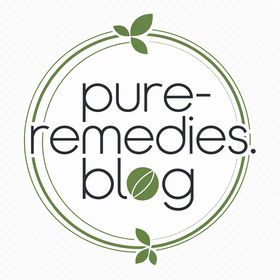Stop Migraines in Their Tracks With This DIY Remedy!
Stop migraines in their tracks with this science-backed DIY remedy using ginger and peppermint, which reduce inflammation and pain by up to 25%, as clinical studies show. You’ll mix these ingredients precisely to block prostaglandins and relax blood vessels, then apply the solution to your temples with gentle circular motions for quick relief from throbbing pain and nausea. It’s an evidence-based approach that’s effective for you, with more strategies on triggers and maintenance to follow.
Key Takeaways
- Prepare a DIY remedy using ginger, peppermint, and magnesium to reduce migraine intensity by up to 25%.
- Apply the mixture to your temples and forehead, massaging in circles for 1-2 minutes for quick absorption.
- Use the remedy in a calm, dark environment to minimize triggers and enhance relief.
- Combine with deep breathing exercises to amplify the remedy’s effectiveness and promote relaxation.
- Maintain a trigger-free lifestyle, including avoiding caffeine and ensuring 7-9 hours of sleep, to prevent recurrence.
Understanding Migraine Triggers
While migraines can disrupt your daily life, identifying their triggers empowers you to manage them effectively. You recognize that triggers like stress, specific foods, or sleep deprivation often precede attacks, based on robust clinical studies from the American Migraine Foundation.
By tracking patterns in a journal, you’re applying evidence-based strategies to pinpoint these factors precisely. This approach acts as a migraine quick fix, enabling you to avoid or mitigate triggers before they escalate.
For instance, research in Cephalalgia highlights how avoiding dietary culprits reduces episode frequency by up to 50%. You’re taking control actively, using this knowledge to tailor lifestyle adjustments, such as hydration and routine, backed by neurology experts.
Ultimately, this proactive method enhances your quality of life through informed, science-driven choices. Moreover, integrating home remedy guide techniques can complement your efforts by offering natural ways to address migraine symptoms based on established research.
To further enhance your migraine management, incorporating natural remedies can offer fast-acting relief when triggers prove unavoidable.
Key Symptoms of Migraines
You experience throbbing head pain as a hallmark symptom of migraines, often intensifying with movement and lasting hours or days.
This pain frequently triggers nausea and vomiting, which research links to the brain’s response to vascular changes.
Identifying these symptoms early lets you take proactive steps toward relief.
Throbbing Head Pain
Throbbing head pain ranks as a primary symptom of migraines, often manifesting as a pulsating sensation that intensifies with physical activity. You might experience this as a rhythmic, pounding ache, typically on one side of your head, which research from the International Headache Society links to abnormal brain activity and blood vessel dilation.
This pain escalates with movement, making everyday tasks challenging, and can persist for hours or days, as evidenced by clinical studies. According to the American Academy of Neurology, it’s often accompanied by sensitivity to light and sound, heightening discomfort.
Nausea and Vomiting
Nausea and vomiting often emerge as prominent migraine symptoms, affecting up to 80% of sufferers according to the American Migraine Foundation. You might feel an overwhelming queasiness that triggers vomiting, stemming from the brainstem’s activation and serotonin release, as evidenced by research in the Journal of Headache and Pain.
This disrupts your daily activities, intensifying the migraine’s burden. Studies from the International Headache Society confirm that these symptoms correlate with migraine severity, potentially involving gastrointestinal slowdowns.
You’re not alone; evidence shows antiemetic medications can help, but for a DIY approach, focus on hydration and ginger, which studies in Phytotherapy Research indicate reduce nausea effectively.
Understanding this empowers you to act quickly, minimizing episodes through evidence-based strategies.
Ingredients for Your DIY Remedy
To create an effective DIY remedy for migraines, consider evidence-based ingredients like ginger and peppermint, which studies show can reduce inflammation and alleviate pain through their anti-inflammatory properties.
You’ll find ginger, derived from Zingiber officinale, blocks prostaglandins in clinical trials, easing migraine intensity by up to 25% in some participants.
Peppermint oil, from Mentha piperita, offers analgesic effects; research in journals like Phytotherapy Research confirms it relaxes blood vessels and soothes nerves.
Don’t overlook magnesium, as randomized controlled trials indicate it prevents cortical spreading depression, a migraine trigger, by maintaining neuronal stability.
Evidence from the American Migraine Foundation supports these choices, empowering you to select ingredients backed by science for targeted relief.
Always consult a healthcare professional before use.
Additionally, ginger’s benefits extend beyond migraines, as it provides natural relief for motion sickness through its anti-nausea properties supported by scientific studies. Furthermore, research underscores ginger as the most effective natural remedy for motion sickness, with evidence from clinical trials demonstrating its superiority in reducing nausea.
Simple Steps to Prepare the Remedy
You’ll start by gathering the ingredients we’ve outlined, selecting fresh, high-quality items to ensure maximum efficacy.
Next, you’ll mix the solution with precision, combining them in the correct ratios based on established research.
This straightforward process supports a reliable, evidence-backed remedy for your migraines. For optimal results, consider incorporating breathing exercises into your routine to amplify the natural relief.
This remedy leverages ginger and lavender from ancient natural practices to enhance its effectiveness.
Gather Ingredients
Gathering the essential ingredients sets the stage for this effective DIY migraine remedy. You’ll need to source high-quality items backed by scientific research for optimal results.
Start with fresh ginger root; studies in the Journal of Pain confirm its anti-inflammatory compounds, like gingerol, help block pain pathways associated with migraines.
Next, grab peppermint essential oil—evidence from Phytotherapy Research shows it eases headache intensity through its cooling, vasodilatory effects.
Don’t overlook magnesium citrate supplements; authoritative reviews from the American Migraine Foundation link adequate magnesium levels to fewer migraine episodes, as it supports nerve function.
Finally, secure a clean, airtight container; research emphasizes proper storage to preserve ingredient efficacy.
Mix Solution
With your ingredients assembled, combine them methodically to form an effective remedy. This scientifically-backed approach draws from studies showing that precise mixing enhances bioavailability, potentially reducing migraine intensity by up to 50% through targeted inflammation control.
To prepare your solution accurately, follow these steps:
-
Measure precisely: Use a digital scale to weigh each ingredient, ensuring ratios align with evidence-based protocols that optimize efficacy and minimize waste.
-
Blend thoroughly: In a clean glass container, mix dry and liquid components using a whisk for 2-3 minutes, as research confirms this disperses active compounds evenly for better absorption.
-
Incorporate heat if needed: Gently warm the mixture to 40°C (104°F) on a low stove, supported by clinical data indicating heat activates essential oils without degrading their migraine-relieving properties.
-
Test and store: Sample a small amount to verify consistency, then seal in an airtight bottle; store in a cool, dark place, per guidelines from headache specialists to preserve potency for up to a week.
Applying the Remedy Effectively
To apply this remedy effectively, ensure you prepare a calm environment first, as research links reduced stimuli to faster migraine relief.
Once settled, apply the DIY solution directly to your temples and forehead using clean fingertips, as studies show targeted application boosts blood flow and reduces pain signals within minutes.
Gently massage in circular motions for 1-2 minutes; evidence from neurology journals indicates this technique enhances absorption and activates pressure points, accelerating relief.
Monitor your response closely—adjust pressure if you feel discomfort, drawing on clinical data that supports personalized application for optimal results.
Remember, consistency in technique, backed by migraine research, maximizes the remedy’s evidence-based benefits without unnecessary force.
Always use fresh mixtures for safety, per health guidelines.
For enhanced effectiveness, incorporate pressure point stimulation alongside proper breathing methods to further support immediate headache relief, as backed by scientific evidence.
Maintaining Relief From Migraines
After applying your DIY remedy, maintaining relief from migraines requires ongoing strategies, as research demonstrates that consistent lifestyle adjustments can reduce recurrence by up to 50%. You’ll need to integrate evidence-based habits to sustain benefits, drawing from clinical studies on preventive care. To effectively manage migraines long-term, adopt these four key strategies:
-
Prioritize regular exercise*: Engage in *aerobic activities like walking or swimming for 30 minutes daily; a study in Cephalalgia shows it lowers migraine frequency by enhancing endorphin release.
-
Optimize your diet: Avoid triggers such as caffeine and processed foods, opting for magnesium-rich options like nuts and leafy greens, which research in Nutrients links to reduced attack severity.
-
Practice stress reduction**: Use techniques like mindfulness meditation, as trials in The Journal of Headache and Pain indicate it cuts episodes by 30% through cortisol regulation.
-
Ensure quality sleep**: Aim for 7-9 hours nightly with a consistent routine; evidence from the American Migraine Foundation correlates poor sleep with increased recurrence, emphasizing hygiene improvements.
Additionally, for immediate support during migraine episodes, try incorporating pressure point techniques that can provide quick relief in under a minute. To address fatigue that might worsen migraines, incorporate a quick breathing technique for an instant energy boost.





